The easiest way to tell if a deciduous tree needs watering is to look at the soil. For most deciduous species, I want the soil to start drying out before watering. Here’s what this looks like.
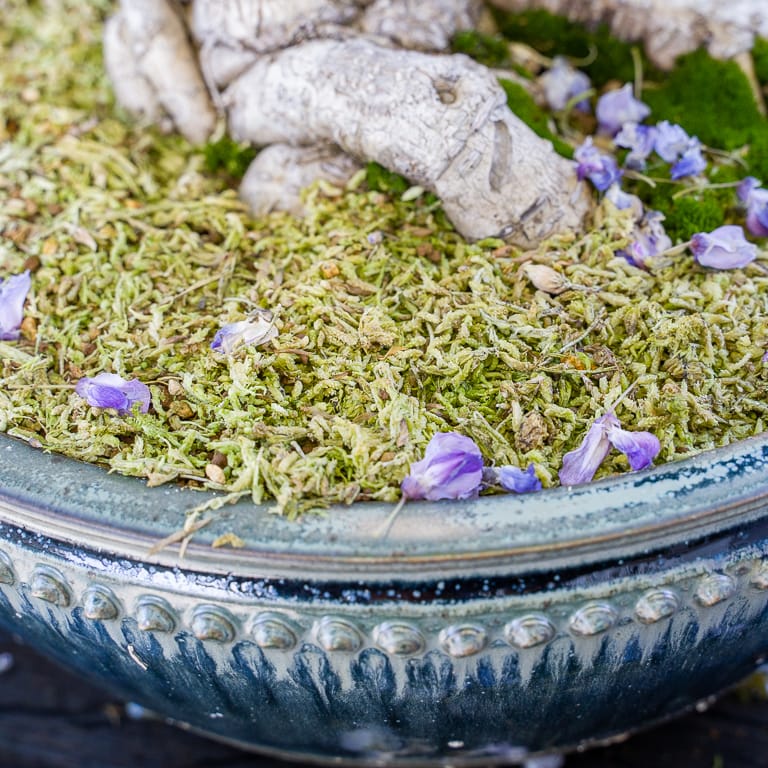
Moss covering the surface of the soil
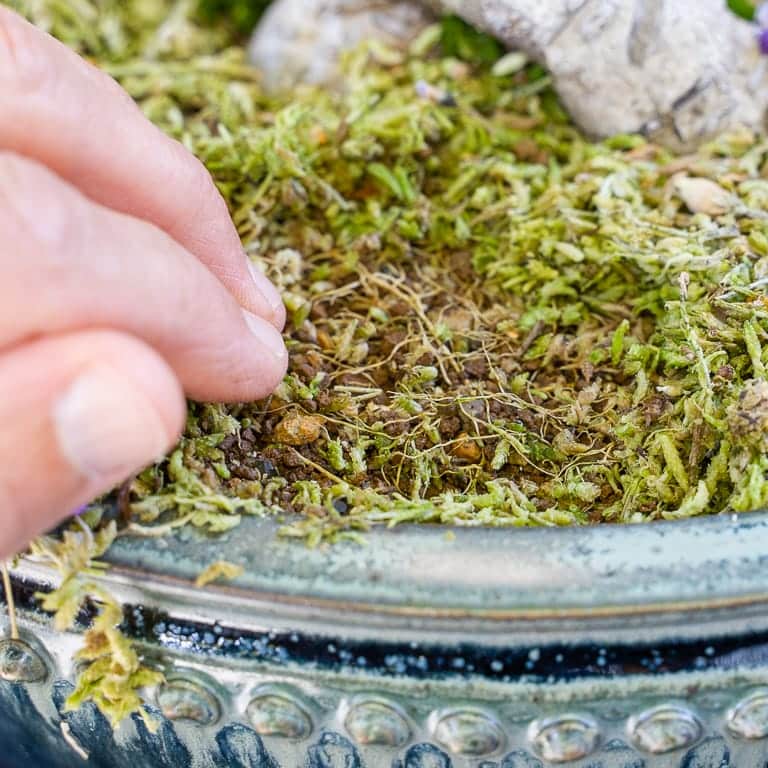
Wet soil – no need to water

Later the same day
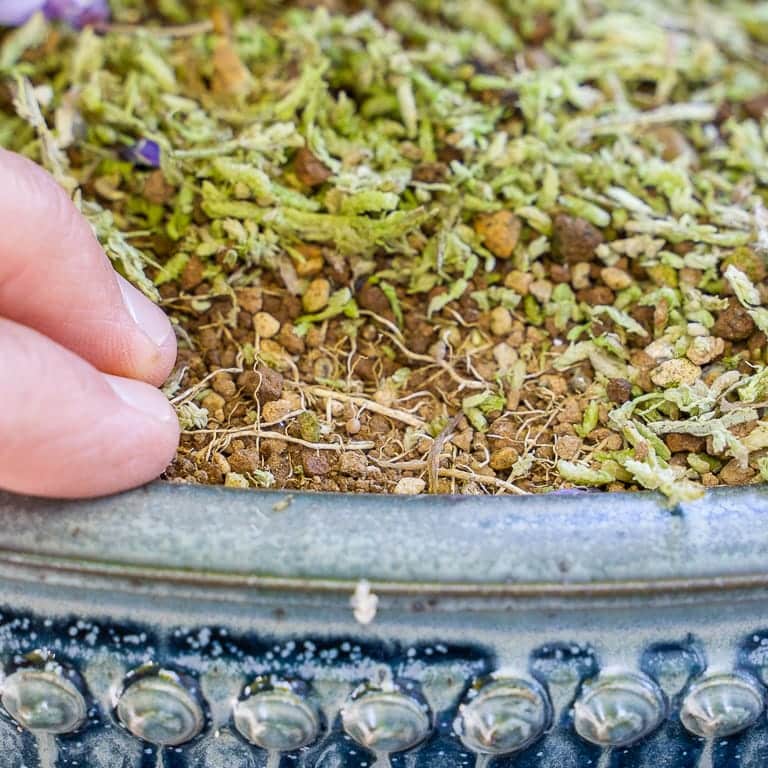
Soil is starting to dry out – time to water
Different species have different water requirements, but in general, deciduous species need more frequent watering than conifers, and some species like Japanese maples and stewartia need more frequent watering than other deciduous species.
Over the years, I’ve found that the most important factor in watering deciduous bonsai is finding the best spot in the garden for each tree to grow. Because deciduous species show signs of damage after a short time without adequate water, the better suited a tree is to its environment, the easier it will be to keep it healthy.
When deciduous bonsai get too much or too little water, they typically let us know about it. The most common sign of underwatering is wilted foliage.
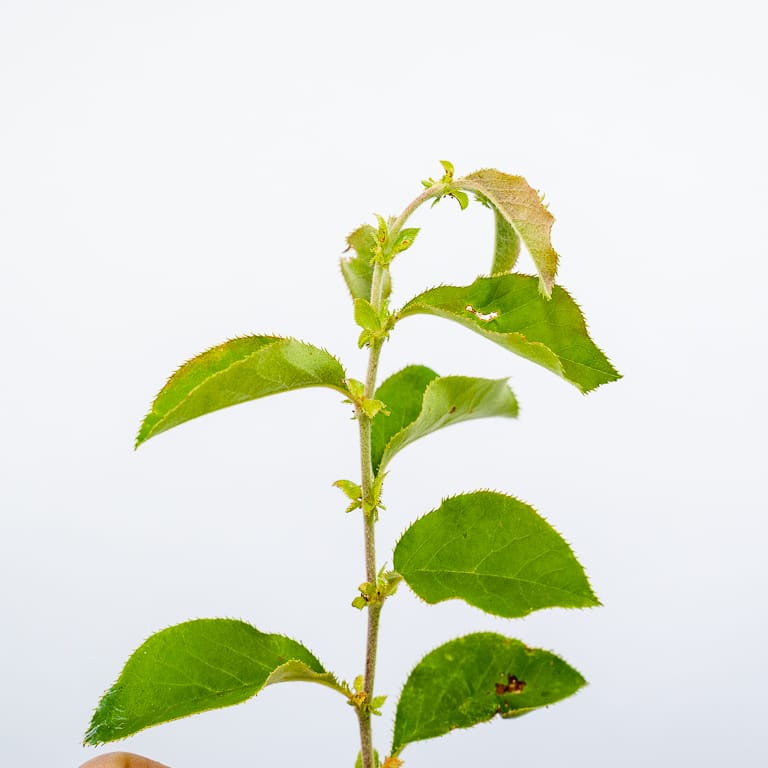
Wilted foliage on Chinese quince
If a tree goes too long without adequate water, the tips can turn brown, and in some cases, foliage will show signs of sunburn by discoloring as in the example below.

Sunburned leaves with dried tips on Japanese maple
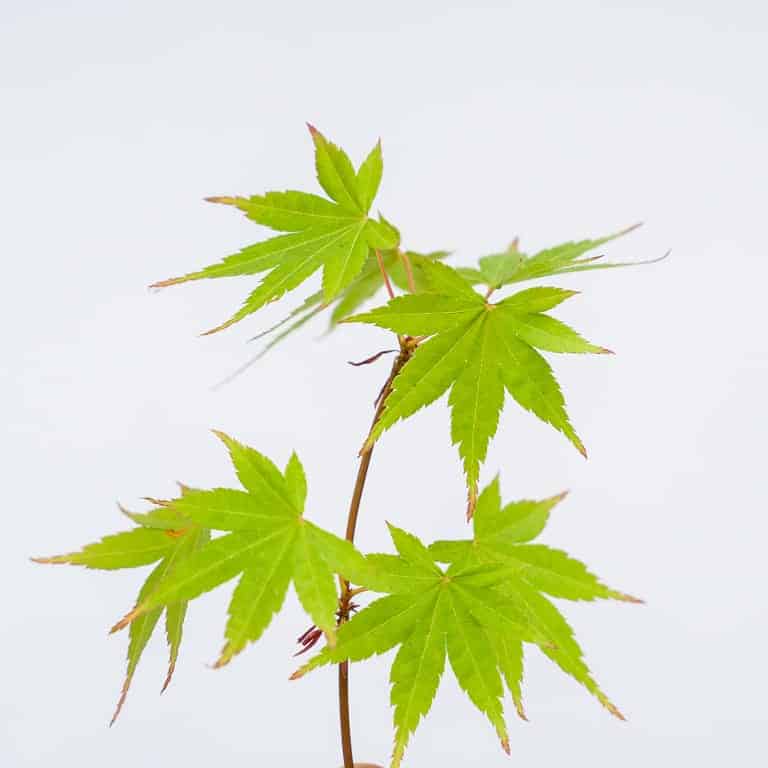
Healthy foliage from the same tree
Overwatering can be hard to diagnose as the symptoms are similar to those caused by underwatering. The best guide to whether the problem is caused by a tree staying too wet or too dry is to think back on your watering habits and determine if the soil was usually wet when you watered or whether it dried out between waterings.
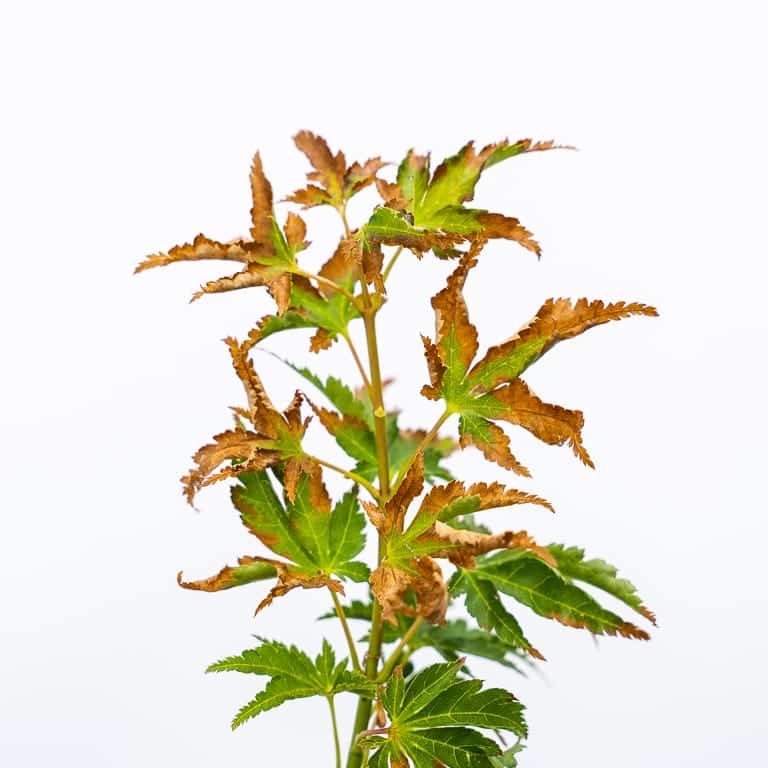
Likely signs of overwatering on a shishigashira Japanese maple
Keeping deciduous bonsai too wet can also lead to fungus problems. One of the most common fungi is powdery mildew. The best way to prevent it is to avoid overhead watering trees for which it is a problem.
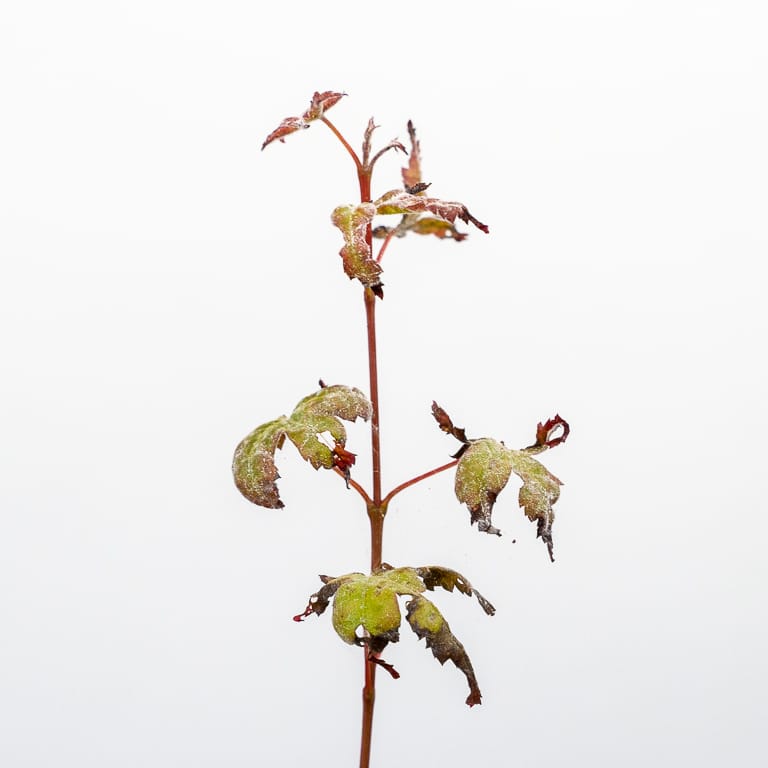
Powdery mildew on Japanese maple
Once you’re familiar with the signs of over- or underwatering, it’s easier to know what changes need to be made to keep your trees healthy.
Of course, making changes can lead to new challenges. This spring was warmer than usual, and as a result, some of my azaleas started showing signs of stress (more yellow leaves, fewer new shoots). To reduce the stress on these trees, I switched my shade structure from 30% shade cloth to 40%. (The number refers to the percentage of the sun that is blocked by the cloth; 40% shade cloth lets 60% of the light through and blocks the rest).
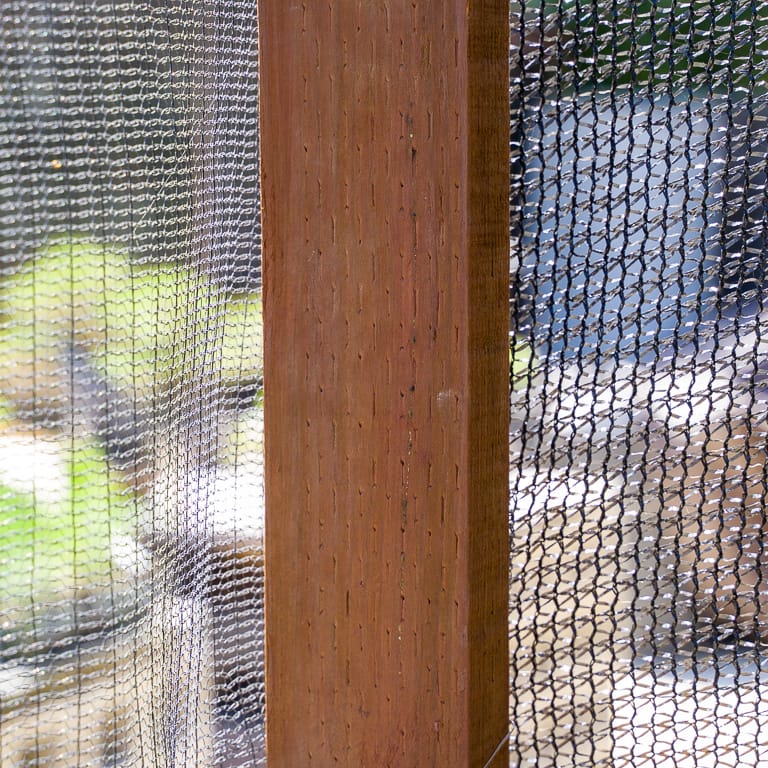
30% shade cloth on the left, 40% on the right
Many of the azaleas in the shade structure started producing new growth within a few weeks of making the switch, but I started seeing less desirable changes in some of my deciduous trees.
Species like trident maple and Korean hornbeam don’t need as much shade as Japanese maple or stewartia, yet all of these species grow under the same shade structure in my garden. After making the switch from 30% to 40%, the new leaves started growing much larger on my hornbeams.
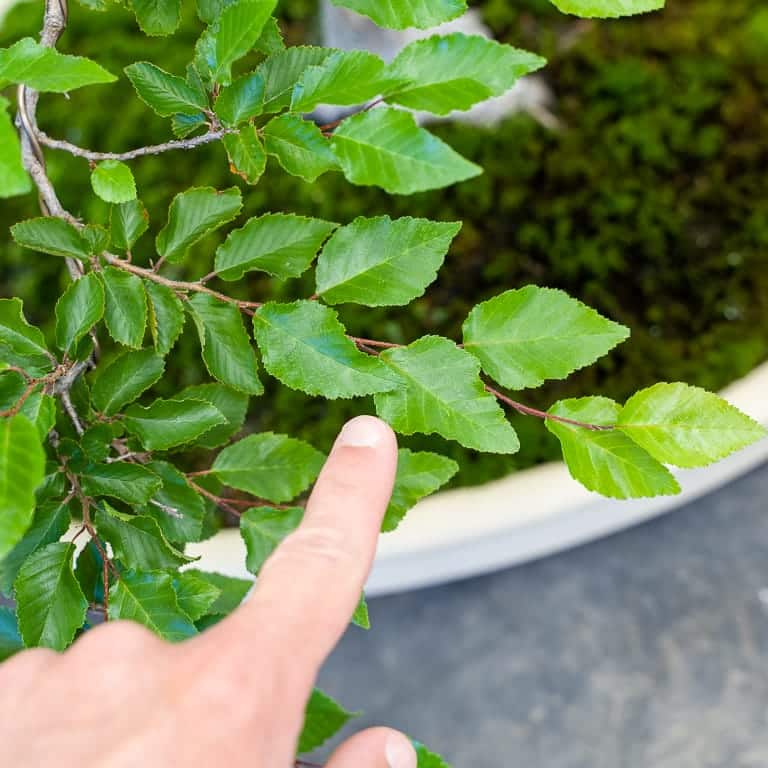
Large leaves on Korean hornbeam
To keep the leaf – and intenode – size in check, I need to make sure these trees start receiving more light.
There’s far more to say about the water needs of deciduous bonsai, so tune for Friday’s post: Watering deciduous bonsai part 2 – top dressings.
Video Consultations Now Available
Have questions about your trees? Schedule an appointment to discuss strategies for improving your bonsai. Learn more about Bonsai Tonight’s Video Consulting.
English-language consultations are available worldwide.
Subscribe to Bonsai Tonight
New Posts Delivered Every Tuesday and Friday
Shinya Miyakoshi says
Good Morning Jonas,
I enjoy reading your post with my morning coffee.
I have a tendency to over water my trees. Do you recommend using Soil Moisture Sensor Meter?
Jonas Dupuich says
Thanks Shinya! I haven’t used moisture meters as they don’t always provide accurate results with bonsai soil, but they can work well in some circumstances. Will try to write more on the topic!
Charles Mosse says
The watering posts are perfect timing and well grounded methods that you and other bonsai and nursery professionals have been telling us and improving on like the use of sphagnum moss. Thanks so much for getting into the subject of watering. Appears so easy but there are so many nuances to it to make it more effecetive to improve the look and health of our trees.
Jonas Dupuich says
Thanks Charlie! I wish it was easier, but it’s one of those bonsai tasks that remains interesting over the years!
Yaroslav says
Do I understand correctly that palmatum maples can get burned tips with both insufficient and excessive watering? Or are there differences in burns?
Jonas Dupuich says
That’s exactly right. And while there some signs that look more like too dry than too wet, but the best clue is your recollection of whether the tree is typically wet or dry when you water.
Vance Hanna says
Jonas,
Thanks for your most diligent work . I must say I do enjoy your daily posts and reflect on my collection accordingly.
I look forward to meeting you . Sincerely
Jonas Dupuich says
Thanks Vance – I hope your pines are doing well!
marc shaw says
Why would trident maples put out leaves all bunched up instead of the more usual leafing along a branch?
Jonas Dupuich says
Hi Marc – good question. Tridents will often put out clumps of leaves while they’re gaining strength and then send out runners when the tree is stronger. This is usually more pronounced on mature trees but I’ve seen it on young trees too. Does it sound like this could be the case? Feel free to post the question with a photo to the forum: https://ask.bonsaitonight.com/